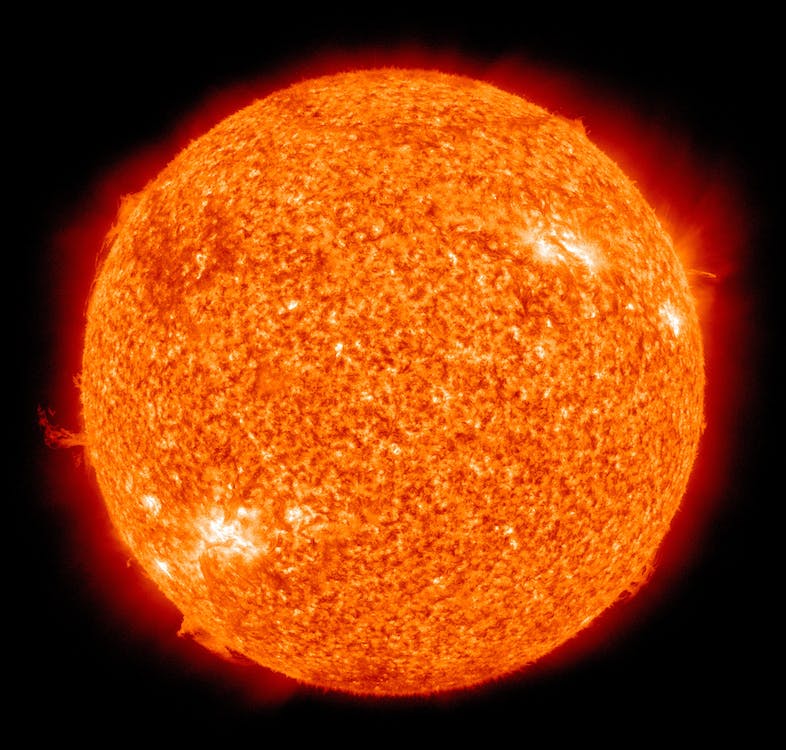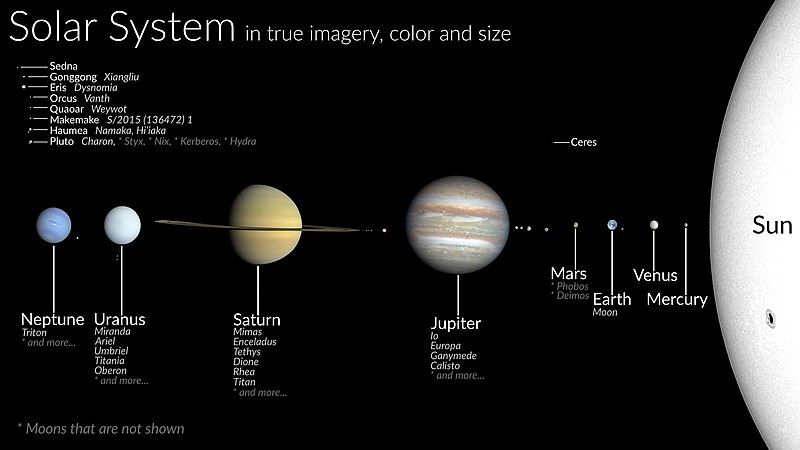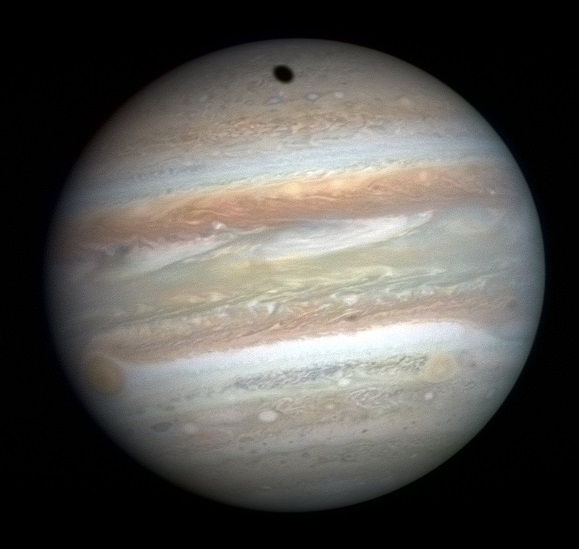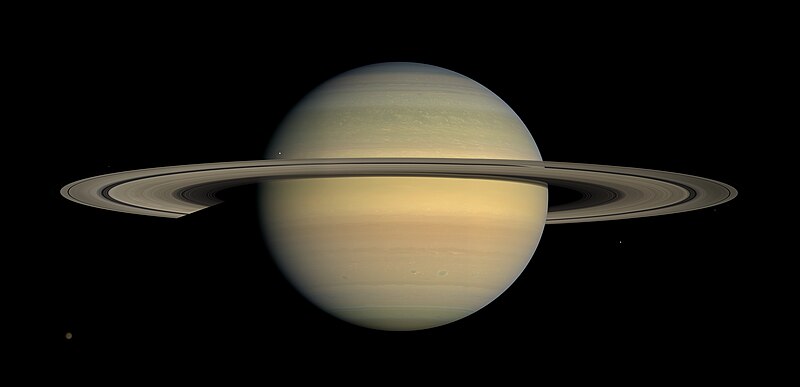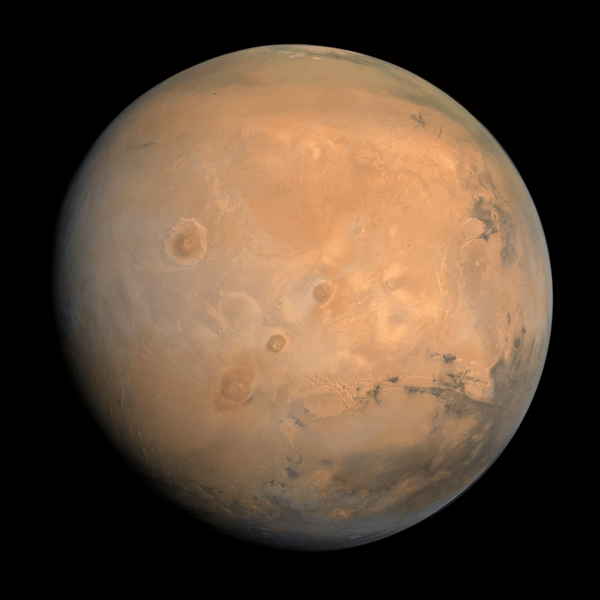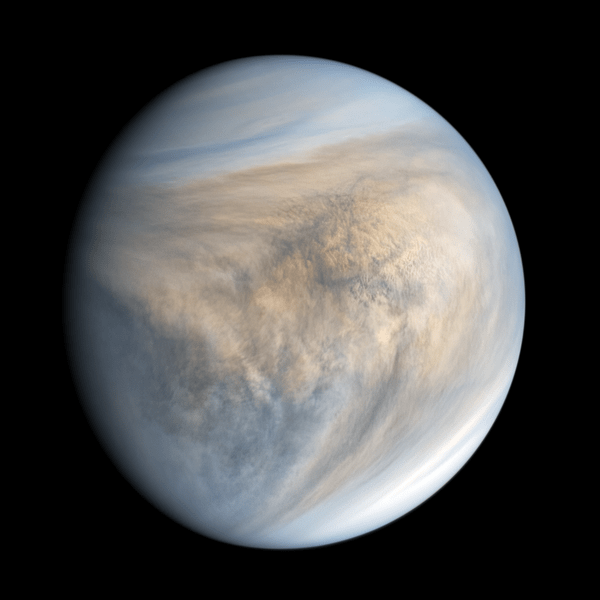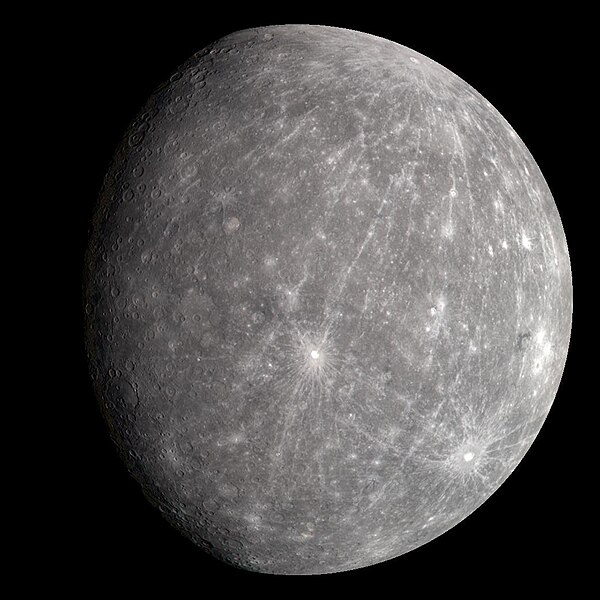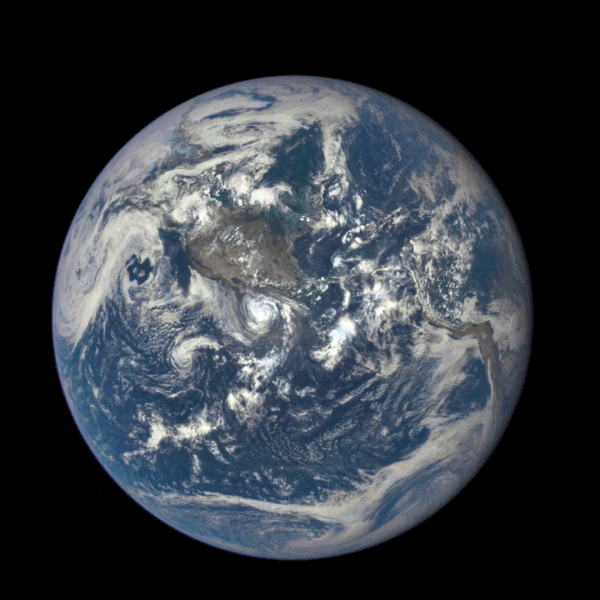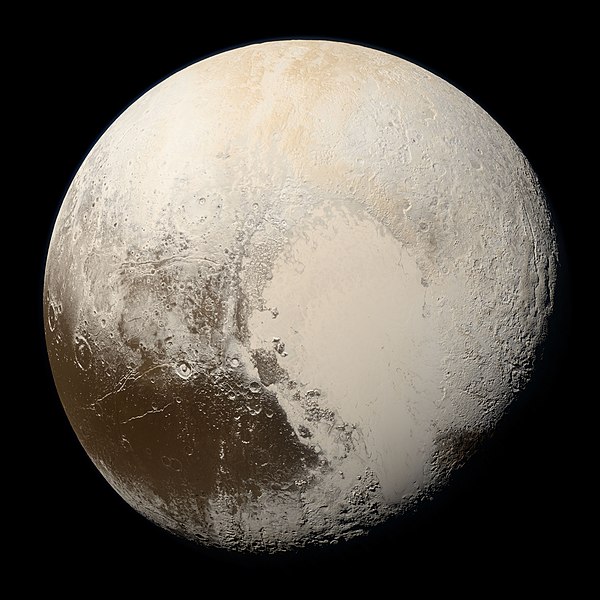The behavior of celestial objects in our solar system is shaped by gravity, a basic force of nature. In this article, we examine the many gravitational forces that exist in space. We explore the range of gravity scales present in our local universe, from enormous gas giants to tiny moons and asteroids. We acquire tremendous insights into the underlying workings of these fascinating worlds by comprehending these disparities. Come along with us on this adventure as we reveal the astronomical mysteries of gravity in our solar system.
What is Gravity?
Gravity, which means “weight” in Latin, is a basic interaction in physics that causes all objects with mass or energy to attract one another. The electromagnetic force, the weak interaction, and the strong interaction are significantly stronger than gravity, which is by far the weakest of the four fundamental interactions. As a result, it has little effect on events occurring at the level of subatomic particles. However, gravity is the most significant interaction between objects at the macroscopic level and controls the motion of planets, stars, galaxies, and even light.
Sublunar tides in the seas are created by the Moon’s gravity, much as gravity on Earth gives weight to physical things (the antipodal tide is brought on by the inertia of the Earth and Moon circling one another). In addition, gravity plays a significant role in many biological processes, including gravitropism, which directs plant development, and the movement of fluids in multicellular organisms. Gravity may affect how the immune system and cells differentiate in the human body on the effects of weightlessness.
Gravity is best described by the general theory of relativity, which Albert Einstein first proposed in 1915. This theory views gravity less as a force and more as the curvature of spacetime that results from an imbalance in mass distribution and causes masses to travel along geodesic arcs. A black hole is the most extreme example of this bending of spacetime since nothing—not even light—can evade it after it has passed its event horizon. Newton’s law of universal gravitation, which states that gravity is a force that attracts any two bodies toward one another and has a magnitude inversely proportional to the square of the distance between them, however, is a good approximation of gravity for the majority of applications.
The Sun and its Gravity
The sun has a mass that exceeds that of all the planets that orbit it, including the Earth, making it the most massive object in the solar system.
The sun has a mass of almost 4.4×1030 pounds (2 x 1030 kg), which is 4.4 with 30 zeros after it. When considering the masses of other stars, which are, perhaps predictably, evaluated in terms of solar masses, which is described as a solar mass, has significance.
The sun is almost a perfect sphere. Its polar and equatorial diameters scarcely differ by 6.2 miles (10 km). The sun has a diameter of around 864,938 miles (1.392 million km), with an average radius of 432,450 miles (696,000 km). 109 Earths could be aligned over the surface of the sun. The diameter of the sun is approximately 2,715,396 miles (4,370,006 km). The sun may be the largest object in this neighborhood, yet it pales in comparison to other stars. Red monster Betelgeuse is around 700 times larger and 14,000 times brighter than the sun.
The Gravitational Pull of the Planets
Every planet has a gravitational pull on Earth, although, except the sun and moon, this attraction is essentially insignificant. This is a result of the great separation between Earth and other planets. Distance is more significant because the gravitational force changes inversely with the square of the distance between things rather than directly with mass alone. Despite being a tiny body, the moon is nearest to Earth and has the highest gravitational pull.
Stability of the solar system
Astronomy has extensively studied the stability of the Solar System. Although the planets have been stable when viewed historically and will continue to be short, their mild gravitational interactions can have unanticipated results.
This is among the reasons why even the most precise long-term models for the orbital motion of the Solar System are not feasible over a few tens of millions of years. The Solar System is chaotic in the sense of mathematical chaos theory as a result of this.
Given that it is improbable that any of the planets will crash with one another or be expelled from the system in the next several billion years, and that Earth’s orbit will be reasonably steady, the Solar System is stable in human terms and well beyond.
Since the discovery of Newton’s law of gravity in 1687, mathematicians and astronomers (including Pierre-Simon Laplace, Joseph Louis Lagrange, Carl Friedrich Gauss, Henri Poincaré, Andrey Kolmogorov, Vladimir Arnold, and Jürgen Moser) have sought proof of the stability of planetary motions. This search has resulted in numerous mathematical advances and numerous subsequent “proofs” of the stability of the solar system.
Gas Giants and Their Gravity
Jupiter’s gravity
The biggest planet in our solar system, Jupiter, has a gravitational pull that makes it unique among other celestial bodies. This section will contrast Jupiter’s gravity with Earth’s and examine how much of an impact it has on the planet’s moons and surroundings.
We are anchored by the Earth’s gravity, which has an acceleration of around 9.8 meters per second squared (m/s2) and impacts our daily lives. On the other hand, Jupiter has an astonishing gravity of 24.79 m/s2, which indicates that standing on Jupiter’s surface would make you feel more than 2.5 times heavier than on Earth. Jupiter’s enormous gravitational pull is evidence of its enormous size and mass concentration.
Beyond its surface, Jupiter’s gravitational pull affects its large family of moons as well as other neighboring objects. The Galilean moons—Io, Europa, Ganymede, and Callisto—the four most well-known moons of Jupiter—are engaged in a gravitational tug-of-war with their enormous host.
The powerful effects of Jupiter’s gravity on its moons and neighboring objects captivate. Like Io, which has strong tidal forces that cause volcanic activity and a dynamic surface. Tidal heating helps Europa by generating a subsurface ocean that may support life.
Jupiter’s gravity also serves as a cosmic shield, collecting comets and asteroids that may endanger Earth. This shielding function emphasizes just how important it is to preserve our home planet.
Jupiter’s gravity offers new perspectives on planetary systems. We learn more about celestial physics and the possibility of habitable places as a result of how its massive gravitational pull interacts with its moons.
Finally, Jupiter’s gravity is stronger than Earth’s, influencing the surroundings and behavior of its moons and other neighboring objects. Exploring helps us better grasp the extraordinary forces at work in our solar system, the dynamics of the planets, and the vastness of the cosmos.
Saturn’s gravity
Saturn, known for its gorgeous rings, stands out in our solar system due to its gravitational pull. Saturn’s gravity is somewhat less powerful than Earth’s, measuring around 10.44 m/s2 compared to Earth’s gravity of roughly 9.8 m/s2. You would feel a little lighter than on Earth if it were possible to stand on Saturn’s surface, which it is not because it is made of gas. This comparison allows us to see how gravity varies throughout our solar system.
Numerous particles, ranging in size from minute grains to huge pieces of ice, make up Saturn’s famous rings. Although aesthetically attractive, these rings are not static objects. They are constantly moving due to the gravitational interactions between the ring particles and the gravity of Saturn.
Saturn’s captivating ring system is delicately shaped by the planet’s gravity. Waves, gaps, and fascinating patterns are produced by the differences in ring particle orbits caused by gravitational forces. Astronomers have been captivated by this interaction for ages.
The several moons in Saturn’s family are all affected by the gravity of Saturn. Moon orbits are shaped by gravitational interactions, which also contribute to the dynamic dance the moons perform around Saturn through intricate resonances and orbital disturbances.
Understanding the complicated mechanics of planetary systems on Saturn’s gravity helps us better grasp how celestial objects arise, are stable, and evolve. It sheds light on Saturn’s distinctive ring system and moon dynamics.
Finally, it can be said that Saturn’s gravity, which is a little less than Earth’s, is a major factor in the formation of its famous rings and the behavior of the moon. Our knowledge of planetary systems and the enthralling beauty of the cosmos are enhanced by investigating this interaction.
Terrestrial Planets and Their Gravity
Earth’s gravity
The gravitational pull that the Earth has on things that are close to its surface is referred to as the Earth’s gravity. On Earth, the average acceleration caused by gravity is 9.8 meters per second squared (m/s2), which is sometimes rounded to 9.8 m/s2 for convenience. The term “1 g” or “standard gravity” refers to this value.
The gravity of the Earth has a tremendous impact on many facets of our life, including:
- Weight – An object’s weight is determined by gravity. The force that pulls something toward the center of the Earth is its weight. An item with a mass of one kilogram (kg) is said to weigh around 9.8 Newtons (N) on Earth. Depending on the planet or celestial body it is on, an object’s weight might fluctuate.
- Falling Objects – When anything is dropped from a height, gravity pulls it downward. Free fall is the term used frequently to describe this occurrence. The acceleration brought on by gravity accelerates an item over time, hastening its descent.
- Orbits – The formation and stability of orbits are greatly influenced by Earth’s gravity. For instance, because of the gravitational attraction between the Earth and these objects, satellites and the International Space Station (ISS) continue to orbit the planet. The satellite maintains a stable orbit by striking a balance between its forward velocity and the effects of gravity.
- Tides – The gravitational pull of the Earth has an impact on its tides. Ocean waters rise and fall in a predictable rhythm due to tidal forces produced by the gravitational pull of the Moon and Sun. Tidal effects are primarily influenced by the gravity of the Moon.
Significant effects of Earth’s gravity on human life
- Human Physiology – Our bodies have evolved to Earth’s gravity over millions of years. Our musculoskeletal system, blood flow, respiratory system, and digestive system are all impacted. The human body adapts to living in microgravity conditions, such as space.
- Move – Gravity on Earth gives us the ability to move about and engage with our surroundings. It maintains us on the ground and enables motions like walking, running, and leaping. After returning from space, astronauts require some time to acclimate to Earth’s gravity.
- Architecture and engineering – The stability and design of buildings, structures, and vehicles are all impacted by gravity. To guarantee safety, engineers, and architects take gravity into account. Tall structures need to be designed to withstand external forces including gravity.
- Astronomical studies – The gravity of the Earth serves as a starting point for research on other celestial bodies. Scientists learn about the difficulties and adjustments required for space travel and settlement by contrasting Earth’s gravity with those of other planets and moons.
The basic force of gravity on Earth has an impact on many facets of human existence, biology, and relationships with the environment. It has influenced how humans have developed, constructed, and explored our planet, and it provides a framework for comprehending gravity on other heavenly bodies.
Mars’ gravity
Mars has several important characteristics with Earth. However, Mars is relatively modest in terms of size, mass, and density. Despite having a mass of just 0.107 Earth, its mean radius of 3.389 km is comparable to around 0.53 Earth. Its density, on the other hand, is around 0.71 that of Earth, or just 3.93 g/cm3. As a result, Mars possesses a gravity of 3.711 m/s2 or 0.38 times that of Earth.
Exploration Opportunities and Challenges
- Mobility and Physical Effects – Exploration on Mars is both difficult and possible due to the planet’s lower gravity. As their bodies will feel lighter and weigh less, astronauts could be able to move more easily and do greater leaps. On the other hand, prolonged use of lowered gravity might also result in the loss of bone and muscle mass. To lessen these consequences, astronauts would require specialized training regimens and safety precautions.
- Launching and Landing – Spacecraft may land and launch on Mars due to the planet’s lower gravity. The lower gravity makes landing easier and may be advantageous for launches from the Martian surface. This may make Mars a useful place to launch expeditions further into the solar system.
- Equipment and Structures – The design and functionality of equipment and structures would be impacted by the reduced gravity on Mars. Due to the lower forces and differing traction from Earth, machines and vehicles would need to make adaptations to their mechanisms. Buildings, homes, and landing areas would have to be made to resist Martian gravity and the peculiar climatic conditions of the planet.
- Utilization of Resources and Sample Collection – Sample collection missions may be made easier by Mars’ reduced gravity. Compared to a higher-gravity setting, returning Martian soil and rock samples to Earth would need less energy. The decreased gravity may also help with resource use by enabling the extraction and transportation of minerals or water ice from Martian regolith.
- Human Adaptation – To live permanently on Mars, humans would need to adapt to the planet’s reduced gravity. Similar to what astronauts already go through during lengthy space missions, returning from Mars would require an adjustment time for human bodies to reacclimate to Earth’s gravity.
Planning upcoming human expeditions and creating technology that can adapt to the Martian environment requires an understanding of the difficulties and opportunities posed by Mars’ reduced gravity. Scientists may learn a lot about human adaptability, resource use, and prospective breakthroughs in space travel and colonization by researching and investigating Mars.
Venus’s Gravity
Venus is sometimes referred to as “Earth’s twin” because of how much it resembles Earth in many respects. Venus is comparable to 0.9499 Earths in size, 4.6023108 km2 in mean radius, 4.86751024 kg in mass, and 5.243 g/cm3 in density. It is also 0.815 times as massive and nearly 0.95 times as dense as Earth. Therefore, it should come as no surprise that Venus’ gravity is 8.87 m/s2, or 0.904 g, which is quite close to Earth’s.
Exploration Opportunities and Challenges
- Venus’s harsh environment, including its high temperature and low atmospheric pressure, makes exploration difficult. Venus is the hottest planet in our solar system due to its surface temperature, which is about 450 degrees Celsius (850 degrees Fahrenheit) on average. On Venus, the atmospheric pressure is roughly 92 times greater than on Earth, which is comparable to being submerged in water to a depth of around 900 meters (3,000 feet). Human exploration and habitation are exceedingly challenging under these harsh circumstances.
- Venus has a harsh atmosphere that is primarily made of carbon dioxide and contains sulfuric acid clouds. It is difficult for machinery and buildings to tolerate prolonged exposure because of the high temperatures and corrosive nature of the environment.
- Limited Surface Exploration. Venus’s surface is inhospitable, making direct exploration and long-term residence difficult. For astronauts to survive the extreme temperatures and air pressure, specialized housing and protective gear are needed.
- Despite Venus’ hostile surface, there are prospects for aerial research in the planet’s upper atmosphere. Conditions are better at heights of around 50 kilometers (31 miles) when temperatures and pressures are similar to those on Earth. Drones, airships, and balloons might all be used as aerial platforms for data collecting and scientific observation in this area.
- The dense atmosphere of Venus makes it possible to research atmospheric processes and climate change, and perhaps even get some understanding of the greenhouse effect. Our knowledge of climate change and atmospheric dynamics on Earth and other planets can be improved by understanding Venus’ atmosphere.
Because of Venus’ hostile atmosphere and severe surface conditions, exploration presents several difficulties. Aerial exploration and atmospheric research provide viable paths for understanding this fascinating planet, even though surface exploration and human habitation confront significant challenges. To get over the obstacles and learn more about Venus’ secrets, additional study and technical improvements are required.
Mercury’s Gravity
Mercury is around 0.383 times the size of Earth and just 0.055 as heavy, with a mean radius of about 2,440 km and a mass of 3.30 1023 kg. As a result, Mercury is the solar system’s smallest and least massive planet. Mercury has a surface gravity of 3.7 m/s2, or 0.38 g, due to its high density of 5.427 g/cm3, which is significantly higher than Earth’s 5.514 g/cm3 value.
Exploration Opportunities and Challenges
- Mercury’s close closeness to the Sun causes it to endure dramatic temperature changes. 430 degrees Celsius (800 degrees Fahrenheit) is the maximum surface temperature that may be reached during the day, while -180 degrees Celsius (-290 degrees Fahrenheit) is the lowest. Advanced thermal protection technologies are needed because of the enormous problems that these abrupt temperature shifts present for equipment and spacecraft.
- Lack of Atmosphere. Compared to Earth, Mercury has a very weak, fragile atmosphere that is essentially nonexistent. Because of this absence of atmosphere, there is little to shield against solar radiation and impacts from micrometeoroids. Aerobraking and landing operations become more challenging since there is less atmospheric pull to slow down spacecraft.
- Mercury’s close closeness to the Sun makes it difficult to put satellites in orbit around the planet. To reach orbit and prevent being sucked into the Sun or sent into space, one must perform precise and energy-intensive maneuvers due to the Sun’s immense gravitational attraction.
- Limited Exploration. There have been comparatively few expeditions to Mercury because of its severe atmosphere and the difficulties involved in researching a planet so near to the Sun. Communication with spacecraft is further hampered by the planet’s close closeness to the Sun since radio transmissions might be degraded or interfered with.
- Scientific Opportunities. Despite the difficulties, Mercury exploration offers distinctive scientific possibilities. Mercury research can shed light on the origins of our solar system, how planets originate, and how solar radiation affects planetary bodies.
- Low gravity on Mercury may be advantageous for gravity-assist movements during interplanetary missions. To accelerate and alter their trajectories for future solar system exploration, spacecraft can utilize Mercury’s gravity.
The low gravity and difficult atmosphere of Mercury make exploration difficult and laborious. Despite the challenges, research on Mercury can yield important scientific information and chances for space missions, advancing our knowledge of planetary formation and the development of our solar system.
Earth’s Moon and Its Gravity
The acceleration caused by gravity on the surface of the Moon is around 1.625 m/s2, which is 16.6% more than the acceleration caused by gravity on the surface of the Earth (0.166 m/s). The variance in gravitational acceleration is roughly 0.0253 m/s2 (1.6% of the acceleration caused by gravity) throughout the whole surface. Things on the Moon will only weigh 16.6% (or 1/6 of what they weigh on the Earth) of what they do on the Earth since weight is directly correlated with gravitational acceleration.
Turbulent Beginnings
The Moon has been Earth’s cosmic partner for all of this time. Through the intangible link of their gravitational pull, they molded one another. When compared to the gravitational attraction of the Earth, the Moon is comparatively feeble. However, the Moon’s gravitational pull is what causes Earth’s present length of day, stable seasons, and tides (Apollo astronauts were able to leap over the lunar surface because of this reduced pull).
Length of Day
The Earth’s rotation was significantly quicker in the early universe; computer simulations suggest that Earth experienced a six-hour day 4.5 billion years ago! Since then, Earth has slowed down and our days have gotten longer thanks to the assistance of our Moon. Stromatolites, which are layers of ancient photosynthetic bacteria, growth rings seen in fossil corals and shells, and other evidence are also available. Stromatolites from 850 million years ago document a day that lasted around 21 hours. In a world with 22-hour days 400 million years ago, fossil corals were alive.
The gravitational attraction of the Moon on the Earth gradually “stole” part of the Earth’s spin energy, sending the Moon into steadily higher orbits. The Moon is moving away from Earth at a pace of two inches (five centimeters) every year, according to Apollo laser studies. The distance between Earth and the Moon grew as both objects’ rotations decreased. The Earth now rotates once every 24 hours.
The Moon’s orbit around Earth today takes more than 27 days to complete. Our Moon spins on its axis and goes through cycles of daylight and darkness, much like Earth. The Moon rotates on its axis once every 27.3 days, therefore its day and night cycles are longer than those of the Earth. The Moon orbits Earth once in the same length of time as it takes for one full rotation. This indicates that the nearside of the Moon is always visible to viewers on Earth. During lunar expeditions, the side (the farside) that cannot be seen from Earth was mapped.
Tides
The gravitational attraction of the Moon pulls on Earth, particularly the part closest to the Moon. This force causes the crust of the Earth to slowly raise (by several millimeters). Small tides can occur in ponds and lakes, including the Great Lakes. But in reaction to this tug, Earth’s seas (and atmosphere) are free to rise many feet. A “bulge” in the seas is created as the Moon circles the Earth. The seas are “left behind” in another bulge on the side of Earth that faces the Moon because there is less gravitational attraction there than anywhere else.
Due to its proximity to Earth, the Moon has a considerable impact on tides. Of course, the Sun also pulls Earth strongly with its gravitational field; this is what maintains Earth in a stable orbit. The waters of the Earth are drawn toward the Sun, but there is little variation in the strength of the Sun’s gravitational attraction on the near and far sides of the planet; the Sun’s gravity only accounts for roughly one-third of the height of the tides.
The Moon was considerably closer to Earth in the early history of the planet. The Moon was 10 times closer and the tides were 1000 times higher billions of years ago. Scientists think that because the Earth was rotating faster quickly, these severe tides only happened once every three hours. In addition to eroding the coastline, the tides also added minerals to the oceans. It’s possible that without these minerals, life wouldn’t have progressed as swiftly.
Shining Light
Our Moon does not generate its light, just like the planets do. It “shines” as a result of reflecting sunlight. The full Moon’s light does make it simpler for people and other animals to see and be seen, even if extensive statistical analyses have found no link between the full Moon and odd behavior. Due to this increased evening illumination, changes in the success rates of predators and the foraging habits of prey species. Corals use the moonlight to time their mating rituals. Because the tides alter the coastal environment, the majority of other animal behaviors related to the Moon are caused by this.
The Moon’s apparent size in the sky is rather little, notwithstanding how big it is shown in literature, film, and art. Almost everyone has had the impression that the Moon seems larger near the horizon. However, it occupies roughly the same amount of sky space when it is straight above and close to the horizon.
Changing Shape
The Moon’s shifting features have served as inspiration for songs, poetry, and even words (like “month”). Time is kept using it (such as the lunar calendar). Although the “amount” of the Moon that we view from Earth changes in a cycle that repeats once every 29.5 days, the form of our Moon doesn’t change. SkyTellers About Our Moon gives details on the lunar phases.
Moon Has Sparked Revolutions in Scientific Thought: The Moon Is a Close Stepping Stone to the Cosmos. The conventional wisdom that the skies were a flawless place was called into question by Galileo’s telescopic vision of the moon’s uneven surface. The Apollo astronauts’ return of Moon rocks revealed that impacts rather than volcanoes were the cause of craters not just on the Moon but also on Mercury, Venus, and Mars. They also disproved pre-existing theories on how the Moon formed, establishing the Giant Impact theory as the leading theory to explain the Moon’s origins.
Dwarf Planet Pluto and its Gravity
Pluto, a dwarf planet, has a gravitational pull that is far less than that of Earth. Pluto’s acceleration owing to gravity is only around 0.006% as strong as Earth’s, or 0.063 meters per second squared (m/s2). In other words, the gravity on Pluto is around 0.006 times that on Earth.
Previously regarded as the ninth and furthest planet from the sun, Pluto is the biggest known dwarf planet in the solar system.
The unusual world is situated in the Kuiper Belt, a region beyond Neptune’s orbit that is teeming with 1 trillion or more comets and hundreds of thousands of stony, ice planets, each more than 62 miles (100 kilometers) wide.
Pluto was downgraded to a dwarf planet in 2006, ending its status as a planet. This reclassification sparked debate and controversy among scientists and the general public.
Percival Lowell, an American astronomer, initially proposed the existence of Pluto in 1905 after seeing odd anomalies in the orbits of Neptune and Uranus. Lowell reasoned that these ice giants’ orbits must be off because of another object whose gravity is pulling on them. Lowell went on to forecast the location of the enigmatic planet in 1915, but he passed away 15 years before it was found. Based on predictions made by Lowell and other astronomers, Clyde Tombaugh finally found Pluto in 1930 at the Lowell Observatory.
The name Pluto was offered to her grandpa by 11-year-old Venetia Burney of Oxford, England, who suggested that the new world be named after the Roman deity of the underworld. The name was later given to Lowell Observatory by her grandpa. The first two letters of Pluto’s name are a tribute to Percival Lowell.
For spacecraft missions and surface investigation, Pluto’s low gravity poses difficulties. However, the knowledge and scientific advancements acquired by investigating this distant planet help us to better comprehend the dynamics of ice planets and the beyond limits of our solar system.
Effects of Distance on Gravity
The strength of a physical substance diminishes with the square of the distance, according to the inverse square law, a fundamental tenet of physics. According to the inverse square law, as the square of the distance between two objects grows, the gravitational force between them decreases.
This indicates that the gravitational attraction between two objects reduces by a factor of four if their separation doubles. The gravitational force is reduced by a factor of nine when the distance is tripled, and so on.
The gravitational attraction between two objects is directly influenced by their separation from one another. The gravitational pull weakens as the distance grows. This connection explains why items near the surface of the Earth are subject to a higher gravitational force than those farther away.
The gravitational force you perceive, for instance, will be just one-fourth as strong if you go twice as far from the Earth’s core. Similar to this, the gravitational attraction weakens to one-ninth of its initial intensity if you go three times as far away.
The inverse square rule helps us understand how distance influences gravitational attraction, but it’s crucial to keep in mind that there can be local deviations and gravitational anomalies because of a variety of circumstances.
- Mass Distribution – Depending on the local distribution of mass, gravitational force may change. Higher mass concentrations can result in stronger gravitational pulls, whilst lower mass densities can result in lesser gravitational pulls.
- Geographical Features – The local gravitational field may change if there are mountains, valleys, or subterranean tunnels. Even though these fluctuations are frequently slight, they can be detected by sensitive equipment.
- Tidal Effects – In regions adjacent to big bodies of water, tidal effects may have an impact on the gravitational pull. Localized differences in gravitational forces may result from the gravitational interaction of the Moon, Sun, and seas of the Earth.
- External Influences – Nearby astronomical objects, such as satellites or other planets, can also have an impact on gravitational forces. The local gravitational field may get perturbed as a result of these impacts.
In several disciplines, including geophysics, navigation, and space exploration, it is crucial to comprehend and account for these gravitational anomalies and local fluctuations. These fluctuations are mapped and studied using precise measurements and modeling, which sheds light on the underlying dynamics and mass distribution of the relevant objects and surroundings.
Conclusion
The inverse square law describes the changes in gravity that occur across our solar system. The dynamics of celestial bodies, planetary exploration, and spacecraft missions are all impacted by the weakening of gravity with increasing distance. Local variations are caused by factors like terrain, tides, and surrounding celestial bodies, as well as things like mass distribution. Exploration of the solar system, geophysics, and navigation all depends on a thorough knowledge of these changes, which also helps us learn more about the underlying forces that shape the cosmos.


